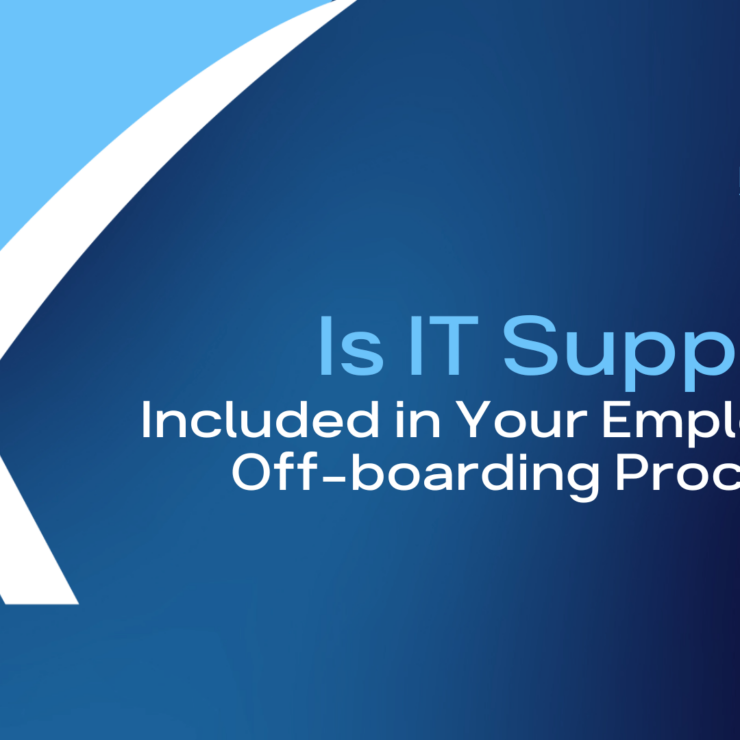Is IT Support Included in Your Employee Offboarding Process?

It’s unfortunate when an employee has to be terminated but it happens. When it does, your IT team shouldn’t be the last to know about it. In fact, the IT department (or your IT support provider) should be involved as soon as possible, not just for terminations but when any employee leaves. Including IT in your offboarding process assures that company information and IT systems are safe from harm or theft by ex-staff members. Even when there’s no ill-will involved in the departure, proper shutdown of accounts locks potential doors where cyber intruders could enter.
Planning and Timing Essential for Offboarding Tasks
Bringing IT into your employee offboarding process is all about planning and timing and everything should be documented. If your company needs to follow regulatory compliance and you have a security audit, you may need to pull up examples of the checklist you went through to shut off access to employees who aren’t with the company anymore.
Your checklist doesn’t just prove that you went through the process, it guides the process itself. If the checklist documents your plan, how does timing come in?
Imagine that you know you’ll be terminating an employee in the afternoon. Give IT a heads up in the morning. As you give them a time frame for when you’re going to speak with the employee, remind them that this is ultra-confidential. When the time comes, the manager confirms with IT that they’re about to meet with the employee. While the meeting happens, IT is already shutting down accounts and changing passwords.
Cover All the Bases Where Employees Access Information and Systems
As you create your offboarding process, think about everything that employees have access to. Finance has details about your bank accounts. Marketing has logins to your social media accounts. Then there’s your customer data, intellectual property, trade secrets, and your proprietary processes, not to mention social security numbers and other personal identifiable information about employees.
Can you see how it’s vital to document your process when there can be so many different parts? Get started with updating your own company’s process by making sure you’re including these components:
1. Inform IT
If the employee happens to call in to IT support asking for a file or is trying to get a password, anyone in IT can see that the person has been switched from active to inactive. They’re not going to provide any files or access unless they get the okay from the manager.
2. Return Equipment
You want to get back all of the computers and peripheral equipment that the employee was using so that you can clean them up and re-image for the next employee, or dispose of them. In an office situation, you may leave monitors and docks for the next employee. In a remote situation, it’s common practice to provide a shipping label in order to return equipment. Monitors can be bulky and expensive to ship, so decide if you want those back too.
3. Company or Personal Cell Phones
When you use a Mobile Device Management (MDM) system, it’s easy to secure phones when an employee is terminated because you can remotely wipe data and lock out access. This works on both company and personal cell phones. If the phone is company owned, collect it at the time of termination so that another employee can use it or you can dispose of it.
4. Phone Numbers
Decide what you’re going to do with the employee’s corporate phone number. Some companies forward calls for a time before shutting down and reassigning the extension.
5. Email and Corporate Accounts
Change the password or lock the former employee’s email account and access to your corporate files. Decide how long you’ll leave the mailbox open and who will monitor it before closing down or forwarding email to the new person taking the position.
6. Web-based Accounts and Software Licenses
Make sure that you know about and can get to all of the web-based accounts that the employee was using. These can include banking, CRM, social media, accounting, HR and more. Keep track of your Microsoft and line-of-business software licenses so that you can make them available to other employees and avoid paying for more than you need.
7. Inventory Web-based Account Info
Be aware that IT is not necessarily going to have access to all of the digital locations that you need to shut down unless you went to the trouble to create a complete inventory and added admin access when that was available. (For example social media accounts.) Again, planning ahead will help you to make sure that your offboarding process is thorough when it comes to shutting down access to accounts and data when employees leave.
Use Automation to Streamline Your Offboarding Process
When there are so many moving parts to your process, automation is the answer to make sure that nothing gets left out. Additionally, automating your offboarding process will save time and bring visibility to the workflow.
Related: Learn how a company’s onboarding process was streamlined with automation
Up Your Game with Automation
Here at XPERTECHS we have staff who are 100% focused on planning and creating automations that improve operations and enable success for our clients. If you’re not getting that kind of innovation from your managed IT service provider, then it’s time to up your game.
Get in touch to schedule a free IT consultation.
